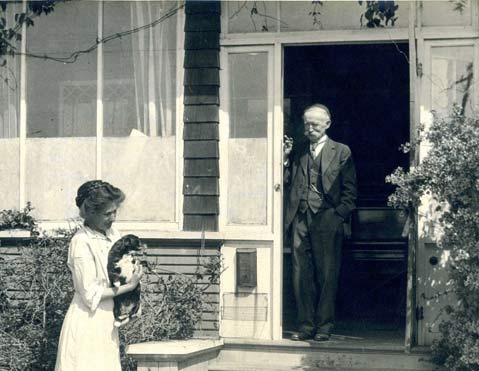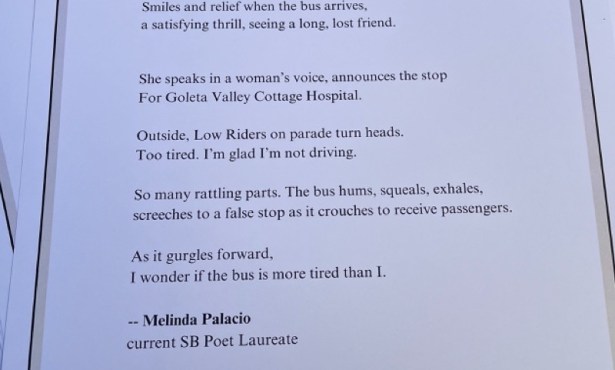Thaddeus Welch
Landscape Painter Makes S.B. His Home

By the time of his death in Santa Barbara in 1919, Thaddeus Welch was considered one of California’s finest landscape painters. He achieved this success despite the disapproval of his father, criticism from his mentors, and decades of grinding poverty. He had triumphed over it all.
In 1847, Welch, age three, left his native Missouri with his family by wagon train for a homestead in Oregon. With a delicate constitution, the boy found the physical demands of farming difficult, much to the displeasure of his father. Welch was 18 when his father deserted the family. Thaddeus, to better support his mother and siblings, moved to Portland, where he was employed in a printing office and then by a newspaper. In 1866, he made his way to San Francisco, where he again caught on with a newspaper. All the while, he spent his free time painting. He joined the San Francisco Art Club and was befriended by other local artists such as William Keith and Thomas Hill.
Welch’s life irrevocably changed in 1874. Through the generosity of a patron who admired the work of the still untrained young man, Welch was able to attend the Royal Academy of Munich. There he met with a mixed reception. Some instructors thought his use of light and color were too bold and they disapproved of his penchant for painting out-of-doors instead of working from sketchbooks in the studio. Nevertheless, his talent had shone through by the time he left Munich and he had won a number of prizes. Welch then moved to Paris, where he built and lived on a boat on the Seine River. Finances remained difficult, but he could always fall back upon the printing trade to see him through the rough times.
Upon his return to the U.S., he became acquainted with the Pilat family of Ossining, New York. He gave painting lessons to the youngest, Ludmilla, and their friendship eventually blossomed into romance. In 1883, the 39-year-old Welch and the 18-year-old Ludmilla wed.
The next two decades were filled with travel for Welch, sometimes with his wife, sometimes alone—from Boston to Chicago to Australia, painting trips to New Mexico and Colorado. Wherever they went, penury seemed to dog the couple. Clients reneged on commissions, the economic depression of the 1890s destroyed demand. In the mid 1890s, the two moved to Marin County, where Welch built a small cabin on the slopes of Mount Tamalpais.
It was during these years in Marin that Welch did his best work. By the turn of the century, Welch’s canvases were finally in demand. Members of San Francisco’s exclusive Bohemian Club spread the word, and collectors from the East began to take notice. By the time of the couple’s final relocation to Santa Barbara in 1905, due to health reasons, the years of poverty had come to an end. Yet another sign of success was that forgers began to fake his work.
Ludmilla also enjoyed a reputation as a painter. She was fascinated by Santa Barbara’s old adobes and rendered many of them in oil. She used as canvases whatever was handy, including the lids of old cigar boxes. As many of these adobes have vanished, her work is a valuable record of the city’s architectural history.
The couple settled into a small home on East Sola Street. Welch continued to paint until death took him in 1919. He also became a bit of an inventor; his creations included a rapid camera shutter and an electric dynamo. He even handcrafted violins. Ludmilla also continued to paint until her death in 1925. Their work constitutes a major achievement in plein air painting in California.



